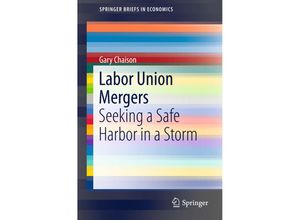This Brief examines the way that labor unions have been able to use mergers to survive the
trend of sharply declining size and bargaining power. Using the metaphor of a ship adrift in a
stormy sea the author addresses the often-asked questions of why unions merge how unions
merge and what unions can accomplish by merging. The first chapter sets the stage for union
mergers by presenting the dilemma of American unions. The second chapter describes the
motivation to merge by linking it to union decline. The third chapter deals with the barriers
to merger primarily major differences in union governance and opposition from officers
members and union staff. The fourth chapter examines the specific process by which unions
amalgamate and absorb the dynamics of merger overtures and negotiations and the themes and
variations of merger agreements and merger implementation agreements. The fifth chapter
examines merger outcomes and the degree to which mergers are only a partial solution and often
cannot resolve the problems that prompted them. The sixth and final chapter summarizes the
present and future role that mergers might play in stabilizing and strengthening a labor
movement adrift in a sea of turmoil. This Brief will be of interest to scholars of industrial
relations labor economics and management.

